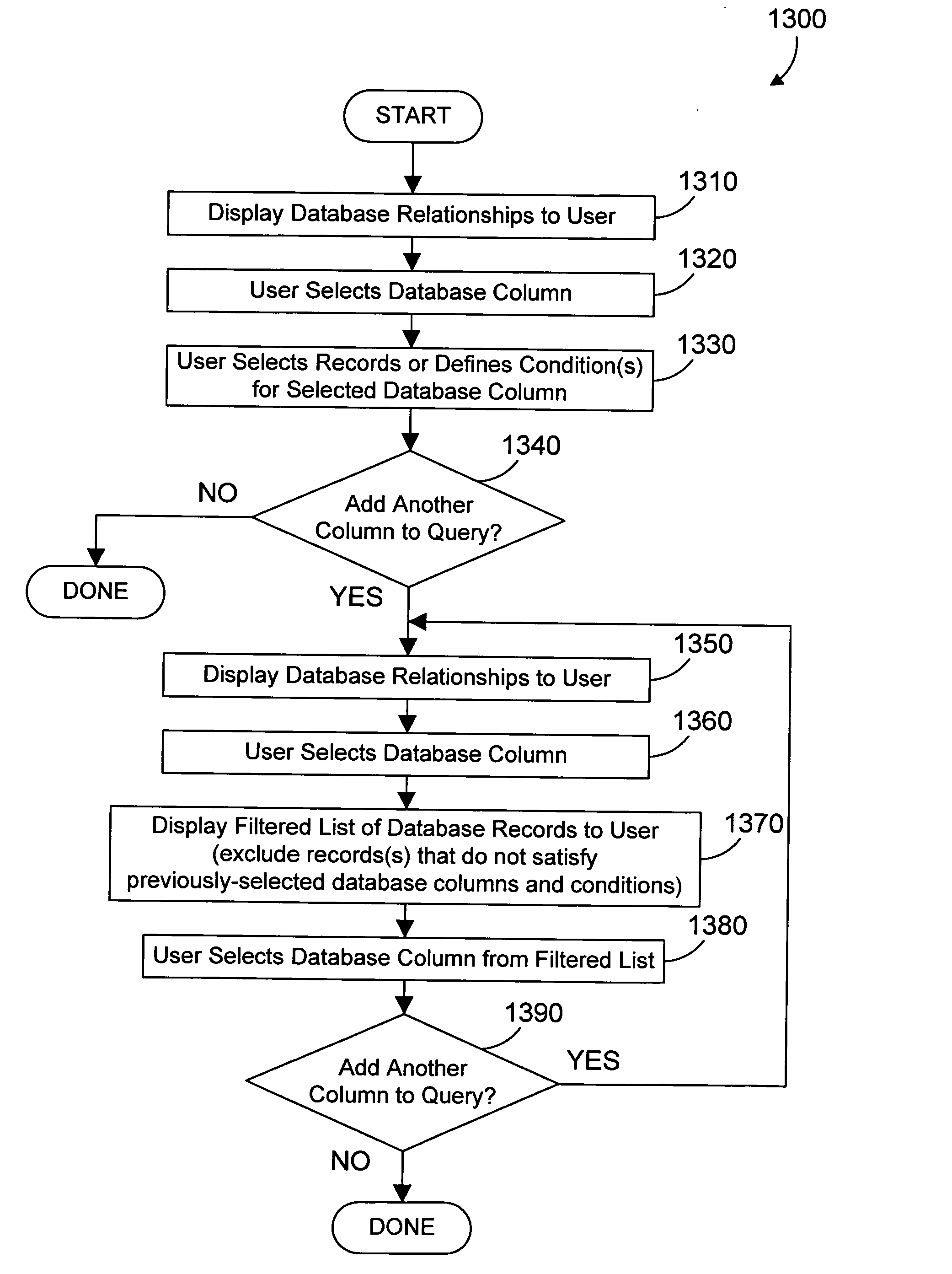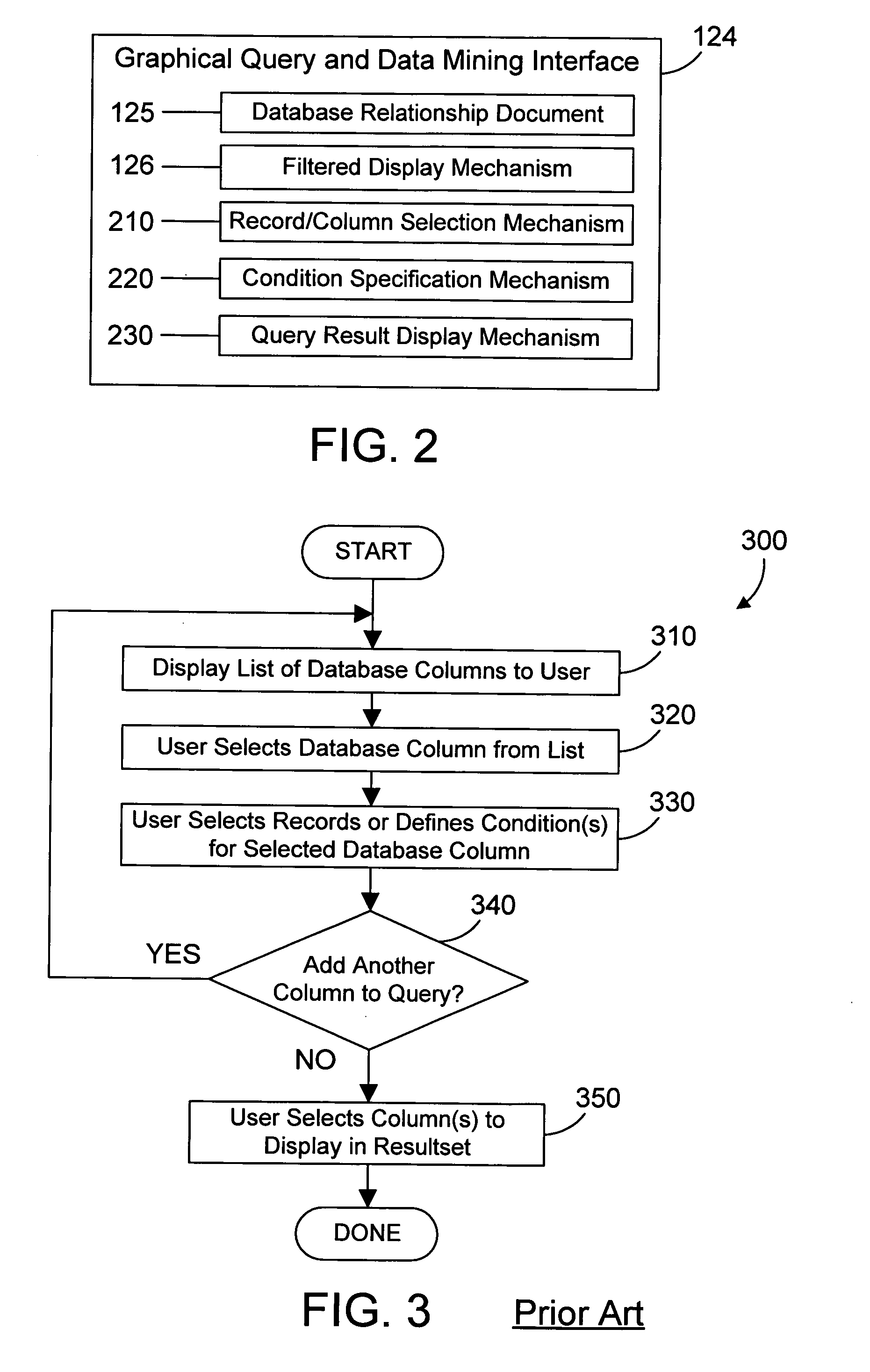Dynamic graphical database query interface
a database and dynamic graphical technology, applied in the field of computer systems, can solve the problems of user's inability to construct queries that are not very meaningful, user's inability to determine whether two tables might represent disjointed sets of data, and the generation of queries that are not terribly useful
- Summary
- Abstract
- Description
- Claims
- Application Information
AI Technical Summary
Benefits of technology
Problems solved by technology
Method used
Image
Examples
first embodiment
[0050] The dynamic graphical query interface in accordance with the present invention provides graphical feedback to the user regarding the quality of the query while the query is being built. Database relationships are displayed to the user. When the user selects something in the database, the display of available selections is filtered according to the portion of the query that has already been constructed. In this manner the user is provided dynamic visual feedback regarding the quality of the query as the query is being built. Using this interface, a user may also mine data from the database because the relationships between database columns are shown, and because the displayed results are filtered according to the user's selections.
second embodiment
[0051] The dynamic graphical query interface in accordance with the second embodiment aids in query construction by dynamically modifying a graphical representation of the query according to a set of predefined rules and according to the user's selections. For example, if a user selects a Gender column, and specifies a value of Gender=male, the dynamic graphical query and data mining interface automatically removes the column Pregnancy from the graphical representation, assuming a rule is defined that specifies that Gender=male removes the Pregnancy column. Of course, many different types of rules may be defined that govern the removal of items in a graphical representation of a database according to selections made by the user in building a query.
[0052] Referring to FIG. 1, a computer system 100 is one suitable implementation of an apparatus in accordance with the preferred embodiments of the invention. Computer system 100 is an IBM eServer iSeries computer system. However, those s...
PUM
 Login to View More
Login to View More Abstract
Description
Claims
Application Information
 Login to View More
Login to View More - R&D
- Intellectual Property
- Life Sciences
- Materials
- Tech Scout
- Unparalleled Data Quality
- Higher Quality Content
- 60% Fewer Hallucinations
Browse by: Latest US Patents, China's latest patents, Technical Efficacy Thesaurus, Application Domain, Technology Topic, Popular Technical Reports.
© 2025 PatSnap. All rights reserved.Legal|Privacy policy|Modern Slavery Act Transparency Statement|Sitemap|About US| Contact US: help@patsnap.com



